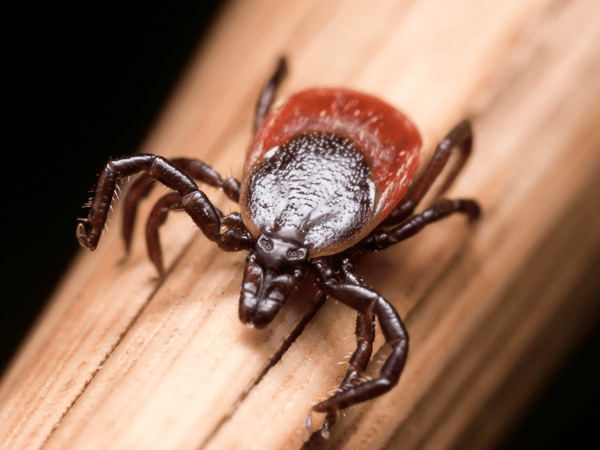Eastern Blacklegged Tick

Danger Level: Extreme
Nicknames: Blacklegged tick, Deer tick, Bear tick
Scientific Name of Tick: Ixodes scapularis
Habitat: Eastern United States and portions of southern Canada
Specific Habitat: Forested areas, especially deciduous forest. The Eastern Blacklegged tick lives where there are loose leaves, in shrubs and grasses, and along woodland trails. Any area that is home to whitetail deer is particularly prone to being inhabited by this tick. The Eastern Blacklegged tick is sometimes found in urban areas, they can exist in a backyard, a public park, just about anywhere. The Eastern Blacklegged tick will wait on branches for a passing animal or human.
Tick Facts and Information: The Eastern Blacklegged tick has three life stages, larvae, nymph, and adult. Eastern Blacklegged tick larvae hunt for a victim during the summer and fall, through September, they can remain attached to a host and feeding for 3 or more days and will then drop off and molt, emerging again as a threat the following spring, as a nymph. Eastern Blacklegged tick nymphs are aggressive from early spring through the end of summer, they will feed on a host for three to four days before falling off and transforming into adults. The greatest threat of attack from an adult Eastern Blacklegged tick is fall through spring, the females are notorious human biters, the males do not feed. A single female can lay a shocking number of eggs, up to 2000. The Eastern Blacklegged tick is, on average, smaller than most ticks, which makes them very hard to spot. The Eastern Blacklegged tick hunts by questing. The Eastern Blacklegged tick has been known to transmit Powassan virus, one of the deadliest tick-borne threats, it carries a mortality rate of up to 15%. A bite from the Eastern Blacklegged tick can cause debilitating disease and result in death.
Tick Color and Appearance: Most Blacklegged ticks have very dark black legs, a telltale feature, hence the name. Adult females have a very colorful orange and red body which stands out and noticeably in contrast to their black scutum.
Size and Number of Legs: The average adult Eastern Blacklegged tick is 1/16 of an inch, size will vary greatly during the tick’s life cycle. Larvae have 6 legs, nymphs and adults have 8 legs.
Diseases Transmitted: Lyme disease, Anaplasmosis, Babesiosis, Powassan virus
Control Solution: Tick Proof Repellent
Full Scientific Classification: Kingdom: Animalia, Phylum: Arthropoda, Subphylum: Chelicerata, Class: Arachnida, Subclass: Acari, Superorder: Parasitiformes, Order: Ixodida, Family: Ixodidae, Genus: Ixodes, Species: I. scapularis
